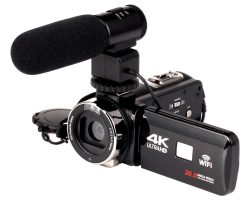
The Top 5 Free Video Template Websites
Looking for a free video template website to help you create professional videos? Check out these five top free video template websites. Each website offers users a variety of free video templates to choose from, as well as helpful tools and tutorials to make creating professional videos easier.
The next way to free video templates download is to use a platform who’s provides free digital download. This website is easy to use and offers a variety of options to help you create a look that you’re happy with.
freevideotest.net – This website provides free video templates that can be used to create professional-looking videos.
video-template.net – This website provides a variety of free video templates that can be used to create professional-looking videos.
web-video.com – Web Video provides a wide range of free video templates that can be used to create professional-looking videos.
video-maker.com – This website provides a wide range of free video templates that can be used to create professional-looking videos.
video-editor.com – This website provides a wide range of free video templates that can be used to create professional-looking videos.
There are a lot of free video templates to choose from, but the five we’ve chosen are the best for starting out in video marketing. These templates can help you create videos that are professional and catchy, and they can be used to promote your business or product.
Hootsuite. Hootsuite is a free video marketing platform that provides users with a range of tools to help them create, manage and share videos. Their video editor is one of the best on the market, and you can use it to make videos for marketing, product demonstrations, or just to show off your work.
Vimeo. Vimeo is a free video hosting service that offers a range of features to help you create and share videos. You can use their video editor to make videos for marketing, product demonstrations, or just to show off your work.
Google Video. Google Video is a free video hosting service that offers a range of features to help you create and share videos. You can use their video editor to make videos for marketing, product demonstrations, or just to show off your work.
Adobe YouTube. Adobe YouTube is a free video hosting service that offers a range of features to help you create and share videos. You can use their video editor to make videos for marketing, product demonstrations, or just to show off your work.
Apple YouTube. Apple YouTube is a free video hosting service that offers a range of features to help you create and share videos. You can use their video editor to make videos for marketing, product demonstrations, or just to show off your work.




